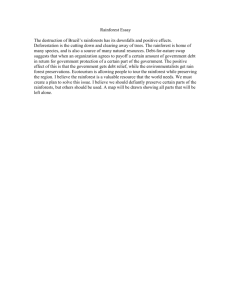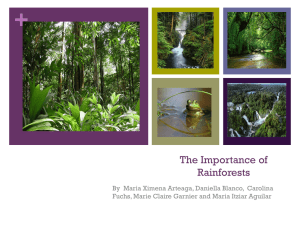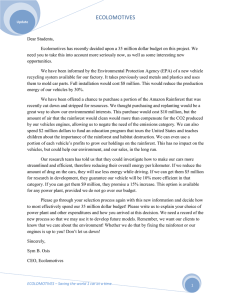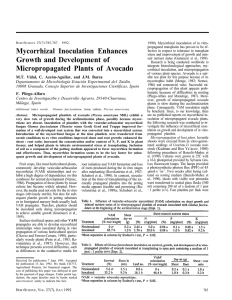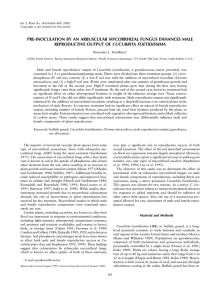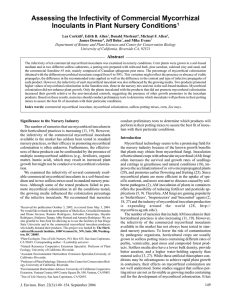RESTORING BIODIVERSITY THROUGH AGRICULTURAL INTENSIFICATION IN THE RAINFOREST REGION OF MADAGASCAR
advertisement
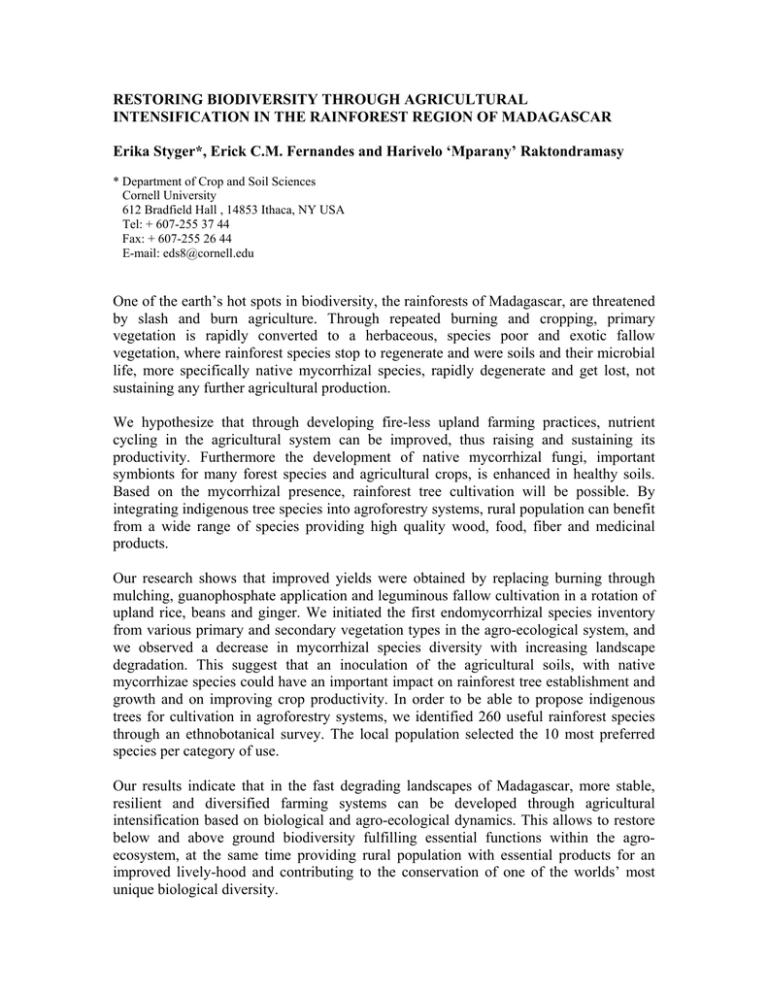
RESTORING BIODIVERSITY THROUGH AGRICULTURAL INTENSIFICATION IN THE RAINFOREST REGION OF MADAGASCAR Erika Styger*, Erick C.M. Fernandes and Harivelo ‘Mparany’ Raktondramasy * Department of Crop and Soil Sciences Cornell University 612 Bradfield Hall , 14853 Ithaca, NY USA Tel: + 607-255 37 44 Fax: + 607-255 26 44 E-mail: eds8@cornell.edu One of the earth’s hot spots in biodiversity, the rainforests of Madagascar, are threatened by slash and burn agriculture. Through repeated burning and cropping, primary vegetation is rapidly converted to a herbaceous, species poor and exotic fallow vegetation, where rainforest species stop to regenerate and were soils and their microbial life, more specifically native mycorrhizal species, rapidly degenerate and get lost, not sustaining any further agricultural production. We hypothesize that through developing fire-less upland farming practices, nutrient cycling in the agricultural system can be improved, thus raising and sustaining its productivity. Furthermore the development of native mycorrhizal fungi, important symbionts for many forest species and agricultural crops, is enhanced in healthy soils. Based on the mycorrhizal presence, rainforest tree cultivation will be possible. By integrating indigenous tree species into agroforestry systems, rural population can benefit from a wide range of species providing high quality wood, food, fiber and medicinal products. Our research shows that improved yields were obtained by replacing burning through mulching, guanophosphate application and leguminous fallow cultivation in a rotation of upland rice, beans and ginger. We initiated the first endomycorrhizal species inventory from various primary and secondary vegetation types in the agro-ecological system, and we observed a decrease in mycorrhizal species diversity with increasing landscape degradation. This suggest that an inoculation of the agricultural soils, with native mycorrhizae species could have an important impact on rainforest tree establishment and growth and on improving crop productivity. In order to be able to propose indigenous trees for cultivation in agroforestry systems, we identified 260 useful rainforest species through an ethnobotanical survey. The local population selected the 10 most preferred species per category of use. Our results indicate that in the fast degrading landscapes of Madagascar, more stable, resilient and diversified farming systems can be developed through agricultural intensification based on biological and agro-ecological dynamics. This allows to restore below and above ground biodiversity fulfilling essential functions within the agroecosystem, at the same time providing rural population with essential products for an improved lively-hood and contributing to the conservation of one of the worlds’ most unique biological diversity.

